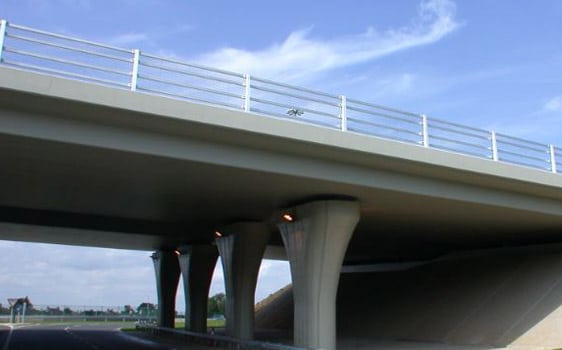10 reasons to choose precast concrete

Precast Concrete has intrinsic properties of thermal inertia (allowing a more constant temperature both in cold and hot environments) and acoustic insulation.
Everybody knows that concrete does not burn. Not only is the structural stability maintained for longer periods, but concrete construction prevents the spread of the fire from one building to another. It is sufficiently strong to resist impacts, blasts and natural catastrophes like earthquakes, tornadoes and floods.
Factory production systems facilitate a wide choice of surface finishing, colour range and special shapes. Precast concrete has another advantage – its ‘mouldability’ which enables designers to copy classical details or match the finish of materials like weathered stones. The precast concrete industry can source a wide range of aggregates locally and offer a tremendous variety of colours and visual effects.
Indoor air quality is a concern for all of us. Precast concrete is stable throughout its life and does not need chemical treatment to protect it against rot and insect attack. This means that there are no emissions in the internal environment.
Advanced technologies used in the precast concrete plants create an improved quality product (i.e. reduced tolerances, thinner sections, engineered solutions) compared with cast on-site concrete. In addition, quality can be checked before a unit is inserted into the structure or site work.
Concrete lasts for years. Egyptian and Chinese people used an ancient form of concrete for buildings and structures that still exist today. Concrete is used where the structural stability has to be maintained for long periods. Effective design detailing helps to lengthen the life of a concrete building. Precast concrete manufacturers can offer guidance on designing for durability.
Made of natural and locally available raw materials (stones, gravels, sand, cement), precast concrete minimises the whole life cycle impact on the environment when compared with other construction materials. Precast concrete units can be entirely re-used or recycled (almost 100% of a concrete building can be recycled, no matter how heavily reinforced).
The top floor of a skyscraper can be cast in the precast concrete factory when the foundations have not yet started. But the project requirements of modern construction require just-in-time delivery. On-site construction using precast concrete is not only faster, but also safer as secure working platforms are quickly established.
Notwithstanding the excellent quality of factory production, precast concrete is a relatively inexpensive material. In addition, the costs of maintenance and repair of concrete structures are limited. There is therefore no need to compromise on quality to reduce costs – simply choose the best way to use locally available resources.
The materials for precast concrete are sourced locally and is manufactured with a minimum waste of raw materials and without environmentally damaging preservatives. Precast concrete has thermal mass and delivers comfortable and safer buildings and can be recycled at the end of its long life.
